|
|
|
|
|
|
|
History Repeating
New Zealand House & Garden November 2002
Sally Blundell discovers a sense of the past in a Christchurch house that has
changed for the future. Photographs: Doc Ross
|
|
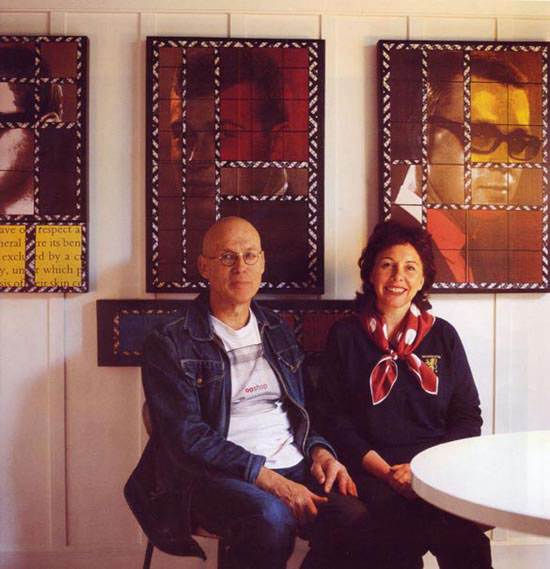 |
|
|
One visit to the inner city gentleman’s residence was all it took for artists Robyne Voyce and Rudolf Boelee to know they found their new home. just outside Christchurch’s four avenues, it would have once been one of many houses from the arts and crafts era sitting sedately on its quarter acre section. Rescued from the demands of in-dill housing and city commercialization, the house is a rare piece of Christchurch still in a remarkably original state.
“What appealed to us was that the house hadn’t been altered at all.. The kitchen and bathroom were original. All the paneling was still there. Nothing had been updated,” says Robyne.
Previous owners had painstakingly stripped back all the timber, however, leaving the rooms looking dark and dull.. At a time when renovators were waging war against any painted surfaces Robyne and Rudolf spent their first Christmas in the house painting. Using white, two shades of grey and coloured rectangles in the living room they developed a look that was clean, modern and in keeping with the timber floors stripped of their dark varnish and the extensive plant borders shielding the house from the street.
“ As soon as we painted the walls the outside seemed to come in. You became aware of the garden. The effect was one large area instead of a series of smaller darker spaces,” says Robyne.
|
|
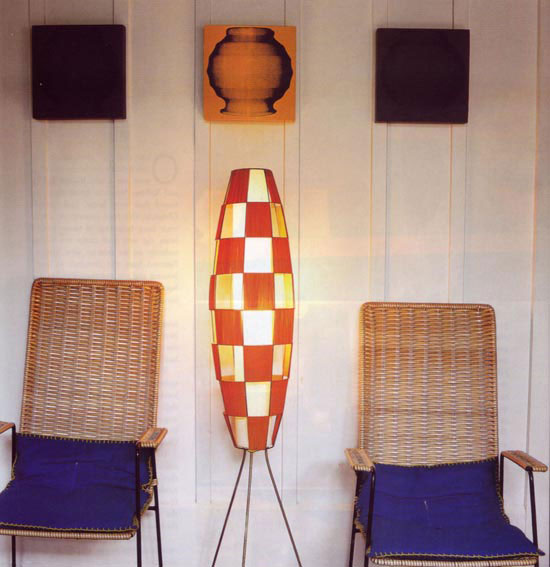 |
|
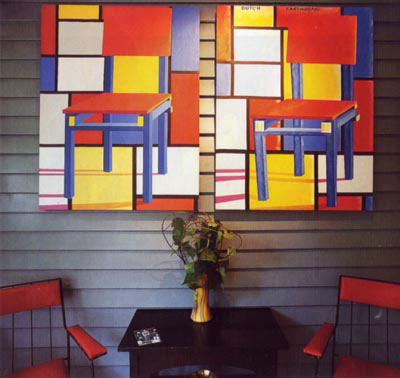 |
|
But while enthusiastic friends suggested ripping out walls the new owners were determined to keep the integrity of the original structure. “This is what the house is, this is the way it was made. You live with that and you work with that. We wanted to maintain the history of the place,” says Rudolf. This philosophy of honouring your past has played a pivotal in the work and lifestyle of Rudolf, artist and tutor at the Design and Arts College of New Zealand, and Robyne, fabric artist and fashion designer.
Rudolf’s digital works displayed on the walls of the living room and entrance pay tribute to his home city of Rotterdam, the war that ripped that ripped through his childhood - one work shows a forged Nazi pass used by his father to get meat and vegetables to feed his and the five other families living in their building - and the wartime influx of Dutch immigrants in this country.
Other works, including the iconic New Zealand Railway Cups, draw on a post-war New Zealand, a young country turning with hope to a more settled and affluent future.. This, says Rudolf, was a new age of idealism, the legacy of the first Labour government of Michael Joseph Savage and the era of Crown Lynn Potteries, the then “crowning glory” of the ceramics industry in this country.
“My brother Onno took me through the Crown Lynn factory in New Lynn just after it closed and Robyne had a large collection of their decorative and table wares. The company was another casualty of the deregulated nature of industry in this country but it had that touch of elegance and perfection.
In 1994 Robyne and Rudolf acquired Crown Lynn’s former trademark. Crown Lynn New Zealand.. The name was later to be used in an exhibition with designers Brian Shields and Craig Stapley, celebrating the role art and design in Kiw society.
|
|
The grace and style of the Crown Lynn era is echoed in the art, design and collectables in the house. They are a reflection of a shared New Zealand history and a tribute to the eclectic passions of two consummate collectors.
Their furniture, ceramics and objects cover the span of 20th century design. Kiwiana is evident - from the jigsaw of the map of New Zealand to the paua ornaments. In the dining room a recently purchased set of Denby ceramics has pride of place on a 1950’s sideboard. A 1970’s Poole china bowl sits on the 1960’s kitchen table.
|
|
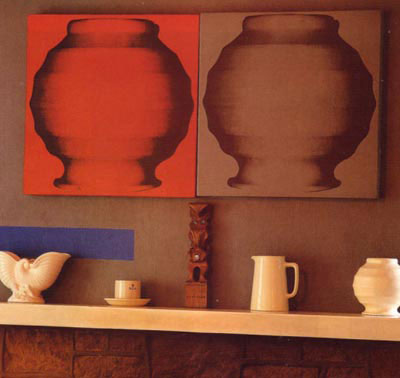 |
|
Such items blend well with the modern sophistication of Robyne’s fabric designs - from the curtains on the lead light windows to the clothes on the steel display stand, these works build on a personal history of 1960’s church fairs and craft stalls, a family penchant for home-made decorative arts passed on to Robyne as a young girl.
As the need for a venue to market their art and design became more apparent the couple considered finding a place in the very heart of the city. But the comfort and practicality of home were hard to beat. “ We still wanted to be here,” says Robyne. “A lot of people were beginning to use older buildings for living and working in and we knew if we left here the developers would pull the house down or it would become flats. We worked too hard for that.” The conversion from home to home gallery and working place was relatively simple. A new wardrobe in the second bedroom - big enough for Robyne’s considerable collection of vintage fabric for clothing and accessories - and gallery lighting in the entrance and former main bedroom allowed for two exhibition areas. Customers now have the inestimable luxury of trying on Robyne’s design in a full -sized bedroom - with a coffee on the table.
“Then we had to think of a name,” says Robyne. “Once the business was set up we didn’t want it to be Rudolf and Robyne’s house”. “ Rudolf was working on his art and I was making clothes and printing fabric - we wanted to tie it all up. So we came up with Opshop.” It was a name that came with a fair amount of misinterpretation. Was it second-hand shop? No. An art auction? No.
“We did not want a particular brand name and all along we have been involved in the whole philosophy of recycling - working with the environment, recycling ideas, recycling pieces of New Zealand history. It’s all about having a conscience and using what is around you. Opshop fitted in with that.”
A series of exhibition openings and a new website helped launch the Opshop name and it continues to draw interest locally and internationally. And as the art of collecting becomes a domain populated by an increasing number of dealers. Robyne and Rudolf’s concerns for holding on to what is precious in the environment has extended to lobbying against genetic engineering, maintaining a large garden and producing work that is in keeping with the timelessness of the modernist style.
|
|
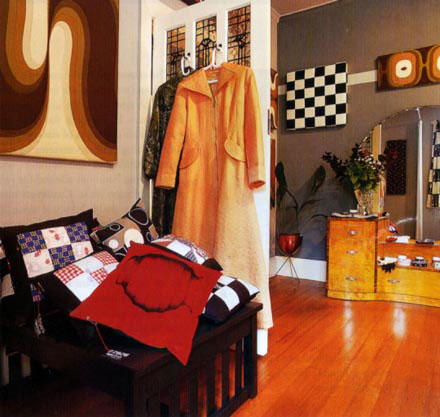 |
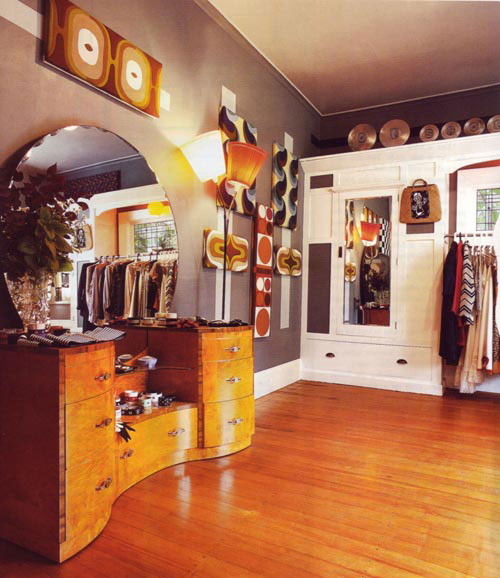 |
|
|
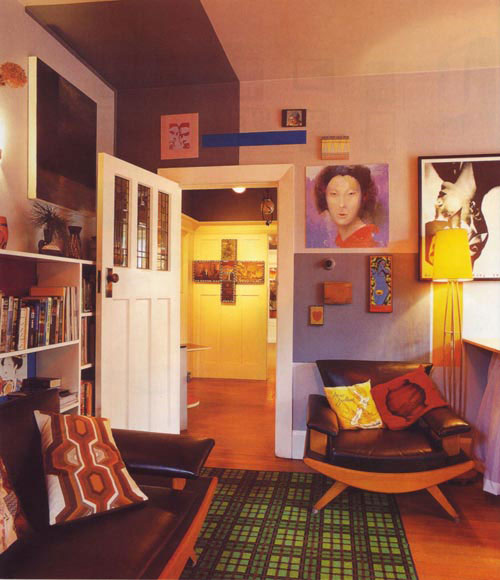 |
|
|
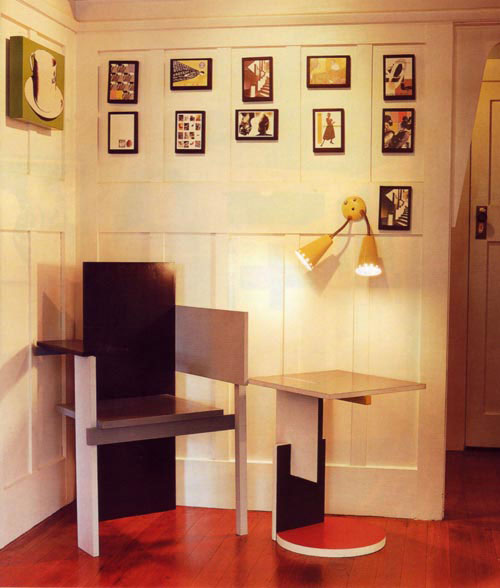 |
|
|
 |
|
|
|
|
|
|
|
|
|
|
|
|
|
|